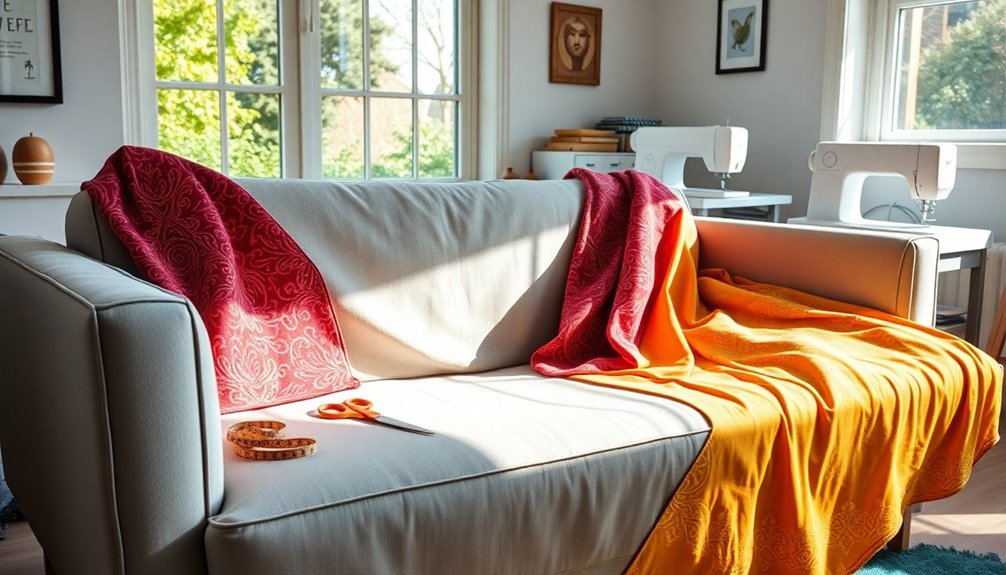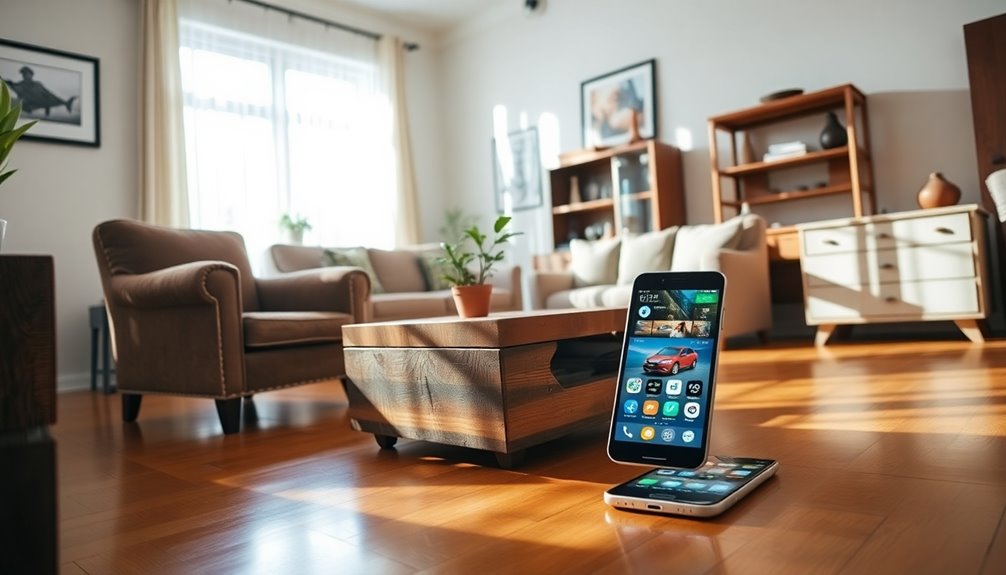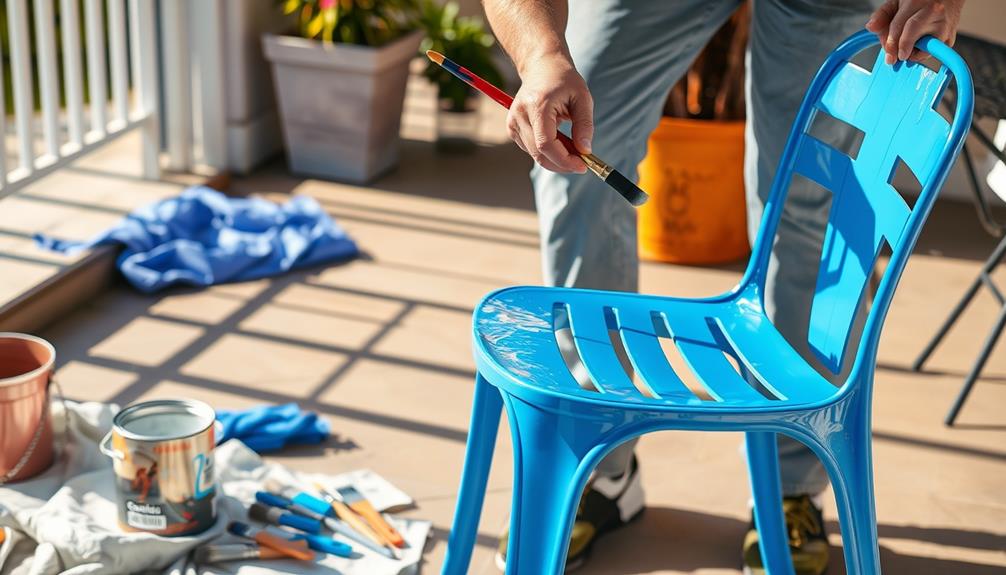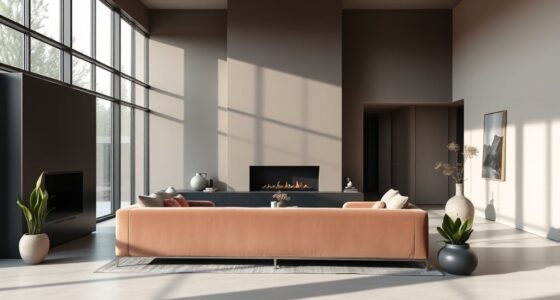Cupolas captivate you with their combination of beauty and functionality. These structures have been around since ancient times, often seen in religious and important buildings. They can complement any architectural style, attracting attention while offering natural light and ventilation. By offering a variety of designs, materials, and colors for customization, you can choose one that fits your vision. In addition to their aesthetic appeal, cupolas also have practical advantages such as promoting airflow, reducing energy costs, and increasing comfort in your space. If you’re interested in learning more about how to effectively install or maintain these stunning features, there is much more to discover.
Key Takeaways
- Cupolas are architectural masterpieces that blend aesthetic elegance with functional benefits like natural ventilation and lighting.
- They have historical significance, originating in ancient structures and evolving into symbols of cultural depth and artistry.
- Diverse design options allow customization, enabling cupolas to complement various architectural styles and enhance a building's identity.
- Their functional advantages include promoting airflow, reducing humidity, and providing unique observational points, improving living space comfort.
- Proper installation and maintenance ensure cupolas remain durable and visually appealing, preserving their allure for years to come.
Historical Origins of Cupolas
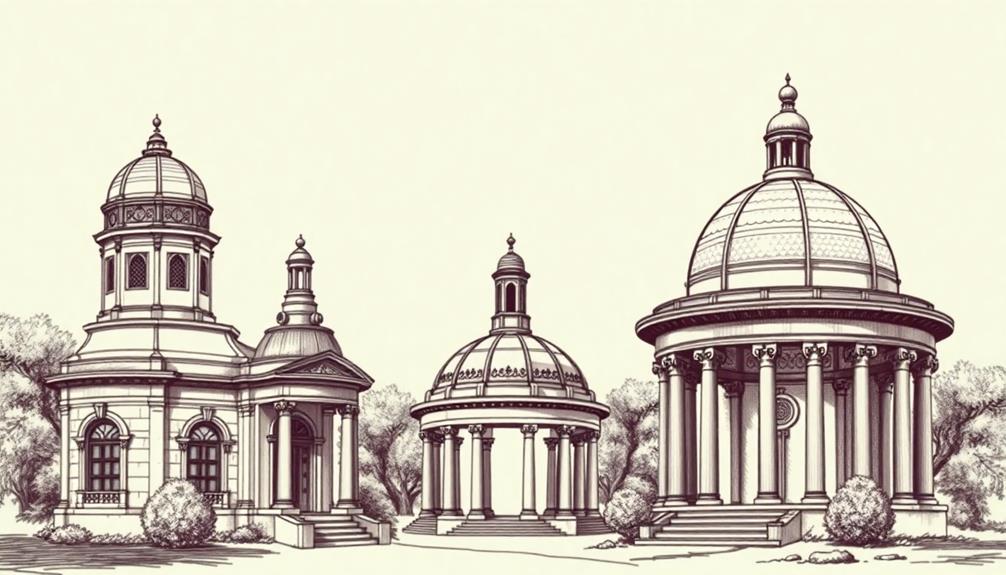
Historically, cupolas often emerged as prominent features in ancient structures, especially in religious buildings like churches. You can trace their origins back to the architectural innovations of ancient civilizations, where they served essential functions.
In the U.S. Capitol, for instance, cupolas facilitated ventilation and allowed natural light to flood in. During the 18th and 19th centuries, they gained popularity in government buildings and large homes, transforming from purely functional elements into iconic architectural features.
As you explore these structures, you'll notice how cupolas symbolize cultural depth and elegance, showcasing the blend of artistry and practicality. Their historical presence highlights not just their aesthetic appeal but also their versatile roles throughout architectural evolution.
Architectural Impact and Value

Cupolas play an essential role in enhancing the architectural impact and value of buildings, combining aesthetic appeal with practical functionality. They add character and elegance to structures, making them stand out in any landscape.
By incorporating cupolas into your designs, you'll create focal points that draw the eye and elevate the overall aesthetic.
- They symbolize cultural depth and historical significance.
- Cupolas integrate modern eco-friendly innovations with traditional craftsmanship.
- Distinctive features enhance the architectural narrative of a building.
- They offer visual interest, contributing to the structure's identity.
- Their unique designs can complement various architectural styles.
Ultimately, cupolas enrich your building with charm and sophistication, making them invaluable assets in architectural design.
Functional Benefits of Cupolas
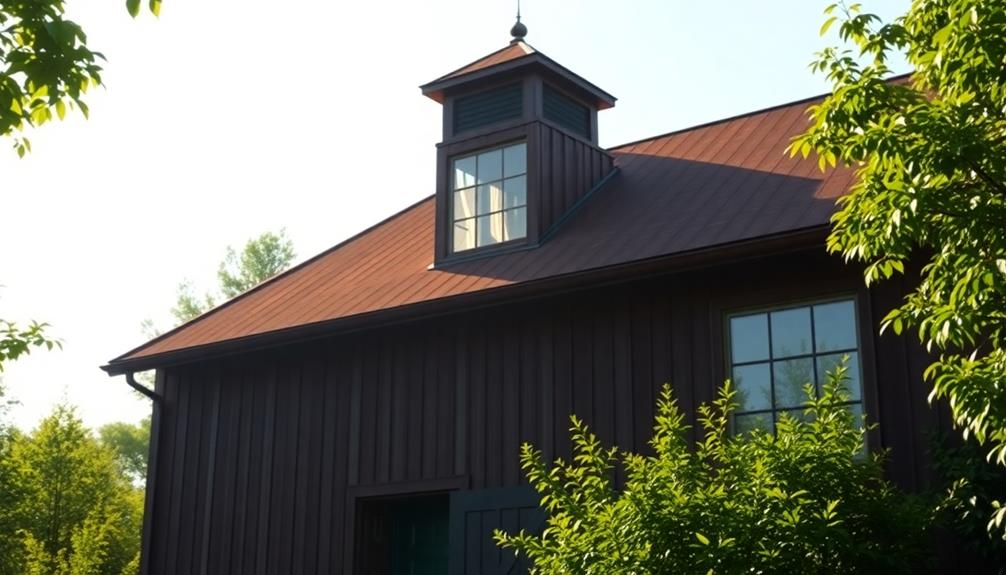
When considering the functional benefits of cupolas, you'll find they serve multiple practical purposes that enhance both comfort and efficiency in your space.
First, cupolas act as natural ventilation systems, promoting airflow and reducing interior humidity. This can lead to a more comfortable environment, especially in warmer months.
Second, they facilitate natural lighting, allowing sunlight to pour in and reducing your reliance on artificial lighting during the day. This not only saves energy but also creates a warm, inviting atmosphere.
Additionally, cupolas can serve as observation points, giving you a unique vantage point for enjoying the surroundings or monitoring your property.
Altogether, these benefits make cupolas a smart choice for enhancing both functionality and aesthetic appeal in any building.
Design Features and Customization
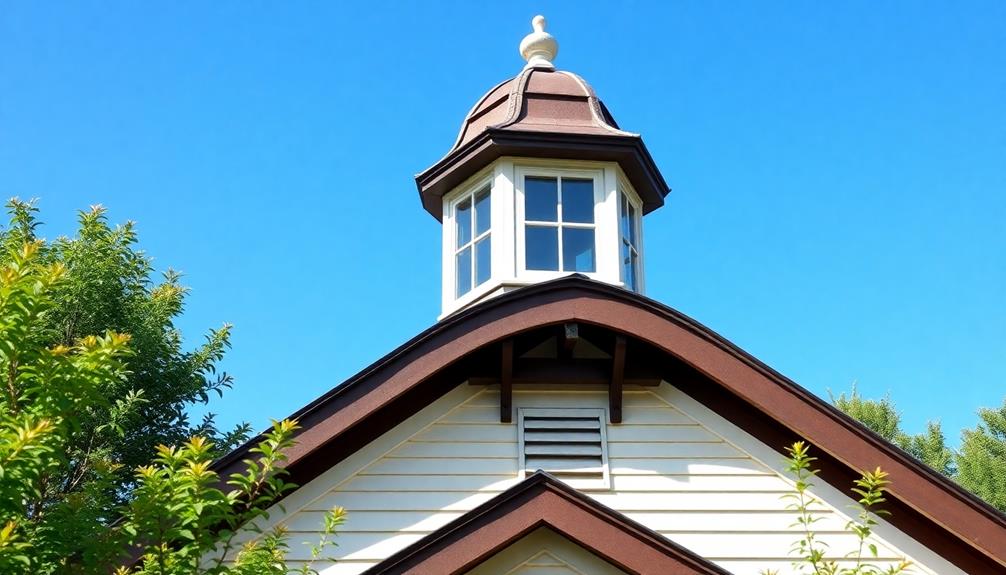
Designing a cupola offers a unique opportunity to blend aesthetics with functionality, allowing you to personalize your space while enhancing its architectural appeal.
You can choose from a variety of design elements to create a cupola that complements your building's character. Consider customizing features such as: the roof style, vent shapes, or incorporating decorative louvers. You can also select materials like copper, wood, or aluminum to match the overall architectural aesthetic. For inspiration, you might even draw from Indonesian home decor ideas, incorporating natural textures like bamboo or intricate carvings to give your cupola an exotic and unique flair. Additionally, you could experiment with bold color palettes or subtle earth tones to evoke a warm, welcoming feel reminiscent of **Indonesian home decor ideas**. Integrating elements such as natural stone or woven rattan can further emphasize a tropical, inviting ambiance. These touches can transform the cupola into a striking focal point that seamlessly blends traditional craftsmanship with **Indonesian home decor ideas** for a distinctive and harmonious design statement.
- Louvered sides for ventilation and decorative flair
- Diverse shapes like bell, pagoda, or hexagonal designs
- Material options including wood, metal, or vinyl for durability
- Color choices that harmonize with your overall color scheme
- Finials or weathervanes to add a unique finishing touch
Installation and Maintenance Best Practices
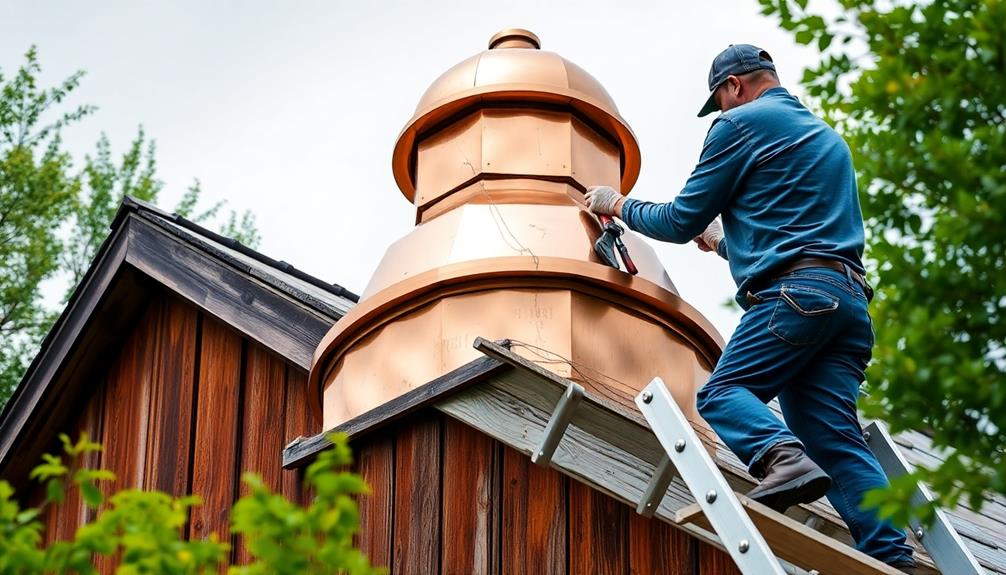
Proper installation and maintenance of cupolas are essential to guarantee their longevity and functionality.
Begin by confirming a solid and level foundation; this prevents structural issues later. During installation, use weather-resistant materials to protect against the elements. Secure all joints and seams to avoid leaks. Regularly inspect the cupola for signs of wear, such as cracks or loose components, and address these issues promptly to prevent further damage.
To maintain its aesthetic appeal, clean the cupola periodically, removing dirt and debris that can accumulate over time. If applicable, repaint or refinish the exterior to protect it from weathering.
Frequently Asked Questions
What Are the Most Popular Styles of Cupolas Today?
Today, you'll find popular cupola styles like the traditional bell-shaped, elegant pagoda, and modern hexagonal designs. Each offers unique aesthetics and functionality, enhancing your building's character while providing ventilation and natural light.
How Do Cupolas Affect Property Value?
Cupolas can skyrocket your property value! They add charm, historical significance, and unique flair. Potential buyers love the aesthetic appeal and functionality, making your home stand out in a competitive market. You'll definitely reap the rewards!
Can Cupolas Be Added to Existing Structures?
Yes, you can definitely add cupolas to existing structures. They enhance aesthetics and functionality, providing ventilation and natural light. Just ascertain you consult with professionals for proper installation and to maintain your building's integrity.
Are There Specific Regulations for Cupola Installation?
When you consider installing a cupola, think of it as adding a crown to a building. You're likely to encounter local regulations, ensuring your beautiful addition meets safety standards and harmonizes with your community's aesthetic.
What Are Some Famous Buildings Featuring Cupolas?
You'll find cupolas on iconic buildings like the U.S. Capitol, St. Peter's Basilica, and Monticello. Each showcases unique designs, enhancing their architectural beauty and providing historical significance that captivates anyone who observes them.
Conclusion
In the grand tapestry of architecture, cupolas stand out like a cherry on top of a sundae. They blend beauty and function, bringing light and air into your space while enhancing its character. As you explore the rich history and design possibilities, you can envision how a modern cupola can elevate your home, much like a crown on a king's head. Embrace the allure of cupolas, and let them inspire your own architectural journey!


